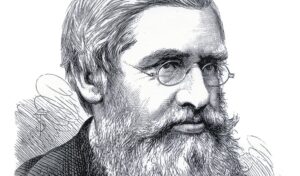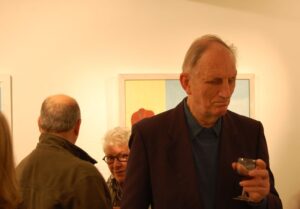
Being asked to write an article on such a topic is rather like asking a man if he has stopped beating his wife.
Cornwall. We have to go back a little. Perhaps as far as the Vikings with whom we were on friendly terms, often fighting on the same side. Jolly Vikings. To the Romans who didn’t quite get here, at least not Down West and, anyway what have they ever done for us? The Saxons. Don’t mention the Saxons. They made it to North Cornwall, which is evident in the difference in place names between North and South and they are generally acknowledged as being responsible for establishing the River Tamar as the border, presumably between us and them. The Normans? We didn’t seem to mind them very much and I suspect that with the sequence of tenants of tenants of tenants that nothing much really changed, especially for the serf at the bottom of the pile and I will leave it to your imaginations to visualise what sort of pile he was actually in.
Move along to 1497. Busy times with the An Gof rising in St Keverne and Perkin Warbeck later in the same year. Move along to 1548. Archdeacon Body came to a sticky end in Helston engendering a certain amount of bloody aftermath and 1549 brought the Prayer Book Rebellion, definitely a bloody ending to that one. Some say that our grievances did not end there but rose again in the Civil War 1642, 1644, 1646 and the Gear Rout in 1648. That really was the end. We were finally crushed and that was when we lost it, when we lost our separate identity, when we became, deep breath now, English.
But I suspect that as this magazine has the word Art in the title, Art is what I am supposed to be talking about. But Cornwall is not that simple. You have to go back in order to understand why we have arrived where we have arrived and why it is not going well.
Now we are a Tourist Industry and are fast becoming a victim of our own success. We are a tiny county and we have definitely over-sold the whole ‘Holiday Destination’ thing. Have we created a Monster Tourist who blows in from the North once a year and destroys us? Does it, perhaps, sound familiar?
Richard Dawkins’ memes might apply here. A cultural memory of bad things coming down from the North, a meme that has been passed through the generations, a meme that makes us resentful of the invaders, the holiday-makers, the bringers of money – ah, yes, you see that is definitely where the buck stops. We need the tourism as we have lost everything else. We have lost the mining industry to cheaper tin and copper in other parts of the world, our fishermen face a constant battle against foreign competition, our farmers simply cannot function in a climate of rules and regulations emanating from Whitehall and Brussels – well, one of those might be solved in the next, ooh, let’s say, 30 years?! Not.
We have destroyed what we have to supply what they want. We have sold out. We have lost respect for what Cornwall has to offer and have attempted to provide what we think the visitors want. We have well and truly killed the goose that laid the golden egg. We have desecrated the land, the villages, the towns, the coastline, the architecture. Oh, dear, don’t get me started on architecture. Wonderfully old and solid granite buildings have been ‘converted’ unsympathetically in the name of the ‘Tourist Industry’ and it is an Industry, although one is tempted to ask what it is that it actually produces.
What do we have left? Well, finally, we come to it. We have Art. Art that can give the visitors what they believe Cornwall is, the dream, the fantasy, the Celtic Myth. Visitors, as we have now been taught to call them, appear not actually to look at Cornwall when they are here, and who does look in this day of mobile phones, of quick photographs to record one’s existence in such and such a spot on such and such a date without actually having to spend the time looking. (I am considering the necessity for a modern day Art Highwayman who would waylay people and relieve them, for their own good of their mobile phones while shouting ‘Stand And Stare’ in order to try to encourage people actually to look at things.) Art now provides the Cornwall that may or may not have been there. Art does the looking for you. Art reproduces what should be there. Nice little sketches, watercolours of the seaside, nice little pastels of fields delicately dotted with sheep, nice little idyllic memories of what wasn’t actually there and blue, above all, blue and buckets of sunshine. There are not many pictures with rain in them but we do have it even in August – often.
Cornwall is chock full of Art and Artists and Artisans and Craftsmen and Galleries for the aforementioned. We have the high, middle and low brow, we have brows of taste that have never even been thought of in your far away Saxon lands.
We have the Tate Gallery in St Ives, we have Barbara Hepworth’s Studio in St Ives, we have the Bernard Leach Pottery in St Ives – approaching its 100th anniversary. We have more galleries per square inch here than you could ever shake a paintbrush at and not just in St Ives. Everywhere where there is a shed or a disused chapel or an empty school or an old bakery, in fact anything that has escaped conversion into holiday homes is up for grabs by the artistic community.

And what do we produce here in these tiny cottage industries? There’s that word again, industry, but this is a real one, a real stick of rocky arty industry because a lot that is produced here is bad, or at best, repetitive. There are many very good artists here who are almost forced to paint what the visitor wants in order to survive. ‘Have you got any more of the ones with the sea in them?’ ‘Have you got any more of those blue bowls?’ The number of times I have heard artisans say, ‘Well, this is my bread and butter work but I get a chance to really let go on the occasional big piece now and then.’ How does this affect their work? How does this injure their artistic integrity or is it more important to feed the inner man? Literally.
Do they teach this at Art College, if there are any of those left, that is, I am sure they teach them all about industry, but do they teach them about the vileness of survival in LaLa Land? In the sweet little end of the world that Cornwall has become. But Cornwall is not a pretty, pretty place, but a tough, rugged, battered rocky end to a landmass jutting out into a hostile sea, pointing to many parts of the world – but not to England.
What of the good Art? It exists. What of the new-fangled installationistas? How do they sit within this struggling industry? The answer is that they do not sit within it but install themselves quite apart from the Local Art. They are above such things and create their own rocky outcrops upon which to sit like patience on an empty plinth. Bless!
In short. There is a lot of Art here and there are many factions within that Art here and there are many styles within that Art here but, and this is our one salvation, it is all here. The artists, sculptors, workers of metal and glass, the potters – although nowadays they prefer to be called ‘ceramicists’ – they are all here. There is no end to the number of artists that Cornwall can sustain and no end to the amount and variety of Art that they can produce and, it sometimes seems that there is no end to the amount of would be artists who come to live the alternative life, and stay and, somehow, live it. This is where it is all happening on this tiny, rocky, edgy outcrop of an Island set in a suitably azure sea. We are here on the edge and that is where the artistic community has always been.
So here’s to Art. Long may it flourish on this kicking and screaming rocky boot of England. Long may it be sought after in its many splendid shapes and forms. We have finally found an invader we are willing to accept, even cherish. Whether Saxon, or Roman or Kentish, or Scot, if you can wield a brush, kick a wheel, blow a goblet, carve a stone, write a sonnet, install an installation, then we love you and will keep and honour you as long as we both shall live.
Maxine Flaneuse de Cornouaille
Volume 33 no 2 November / December 2018 pp 32-33


You have added two pictures, Hoorah for Alfred Wallace, obviously, but who is Bob Bourne?
Bob Bourne, born in 1931, has exhibited at the Belgrave in St Ives.
http://www.belgravestives.co.uk/images/cache/0-0-1-683-400/itemsfs_10793.JPG
Thank you.
Have you not heard of our jewellery and metalwork from the 7th and 8th centuries, not to mention our illuminated manuscripts? Do you really believe what you wrote, “…we have brows of taste that have never even been thought of in your far away Saxon lands.”? I hope you will answer me.
Yes, of course, and of course I have seen the wondrous jewellery and manuscripts made by the Saxon artisans. It was meant to be a small tongue in cheek joke about the way the Cornish have, over the years seen the ‘Saxons/English/anyone from London’ as suspect!! Just a bit of fun. No disrespect intended to genuine Saxon glory.
I loved your article, your attitude.